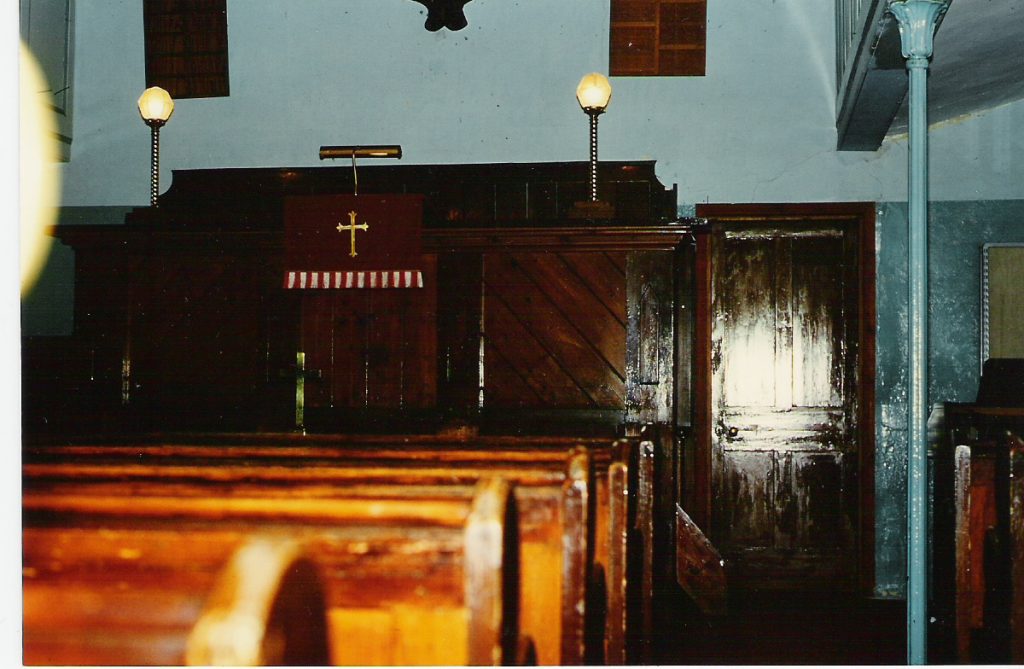
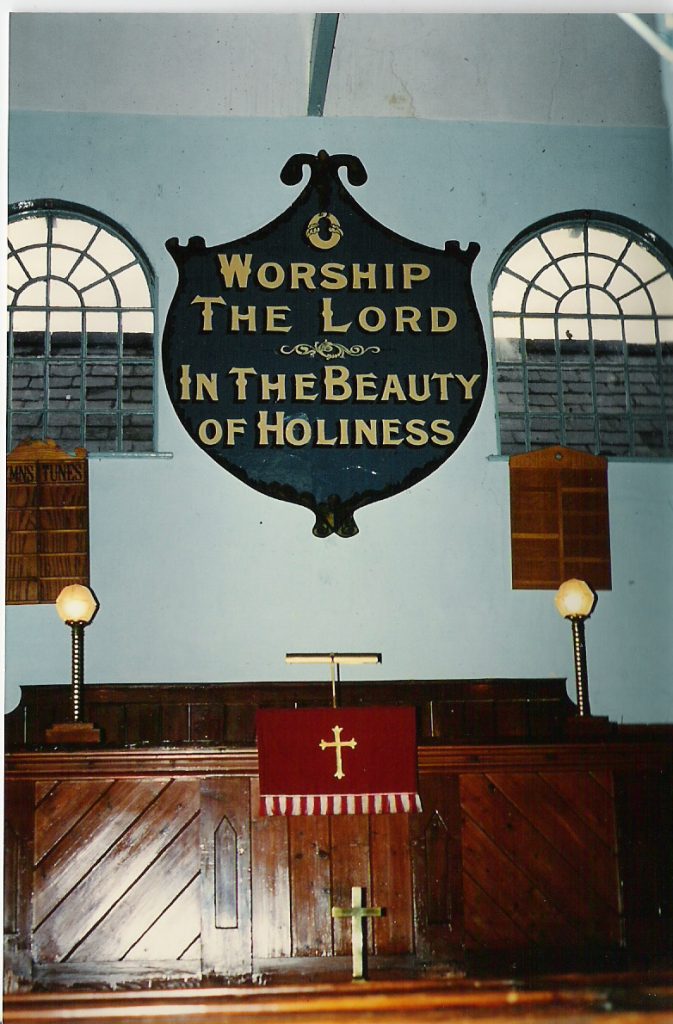
Methodism reached OVER in the early 19th Century. Records show that in 1824 there were 9 confirmed Members of the Methodist Society in OVER, although they did not have a building. A house was registered for worship in 1836, but information handed down over the years suggests that earlier meetings were held in farm buildings opposite the present site.
The present Chapel was built in 1848 on land purchased for £7. The total cost of the construction was £236.14s.10d.
The word REHOBOTH on the tablet above the door comes from the Hebrew word meaning ‘enlargement’. This seems appropriate, as on Census Sunday in 1851, it was recorded that at 2 of the 3 services the building was filled to its capacity of 140.
By 1857 numbers were at such a point that steps were taken to install a gallery into the Chapel to provide extra seating capacity.
In 1861 extra land was purchased at a cost of £2.14s.6d for the purpose of constructing a ‘school room’. Reports show that the total cost of installing the gallery and building the school room was £96.11s.11d.
Records show that in 1884 there were 112 children attending the Sunday School.
In 1914 land was purchased at the side of the Chapel for £12.10s.0d. It is not known exactly what the intended purpose of this land was, although there are records showing that collections were taken up for the ‘New Church fund’. It was used as a garden for many years, and now serves as a car park.
Miss Ruth Chapman, who was one of the Church organists, died in 1948 whilst playing the organ at a service. In her will she left the money for two stained glass windows with instructions that they should be installed at the front of the Chapel. The cost of these windows was £197.10s.0d.
At the same time, the Church decided to spend all of the funds that were in hand to have a third, stained glass window installed above the front doors, the picture being ‘The Dove Of Peace’. This cost an additional £26.
Skip forwards now to 1989, and after several years of decline the Church was faced with a severe outbreak of Dry Rot. This was the catalyst for a total renovation of the property. In October 1990 the building was stripped back to bare brick walls, soil floors and the rafters of the roof;
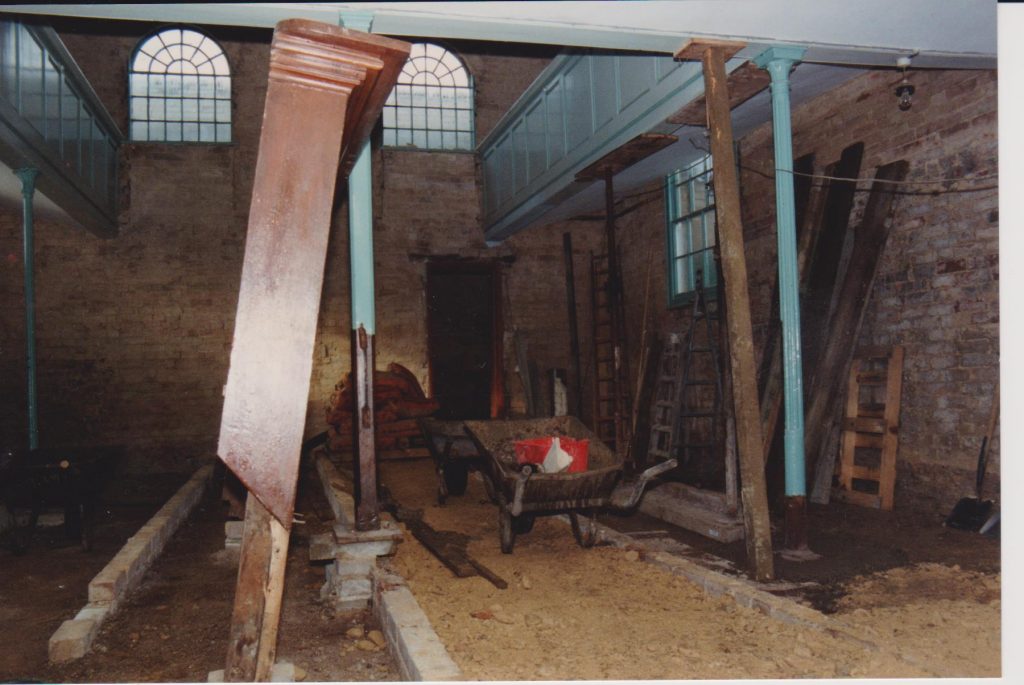
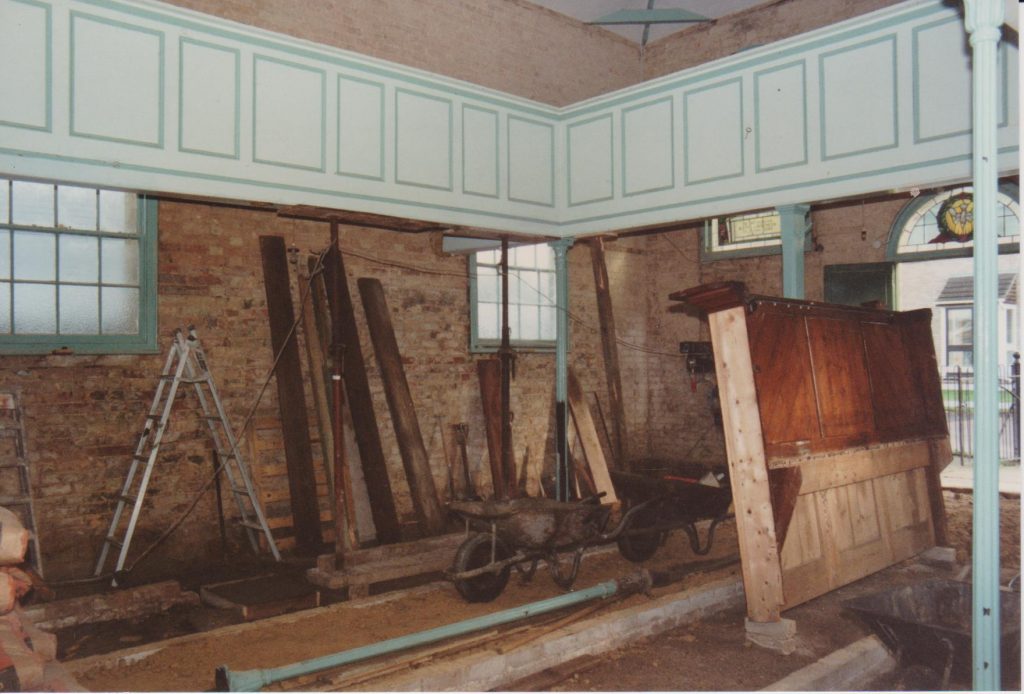
15 weeks later, the first service was held in the newly renovated hall:
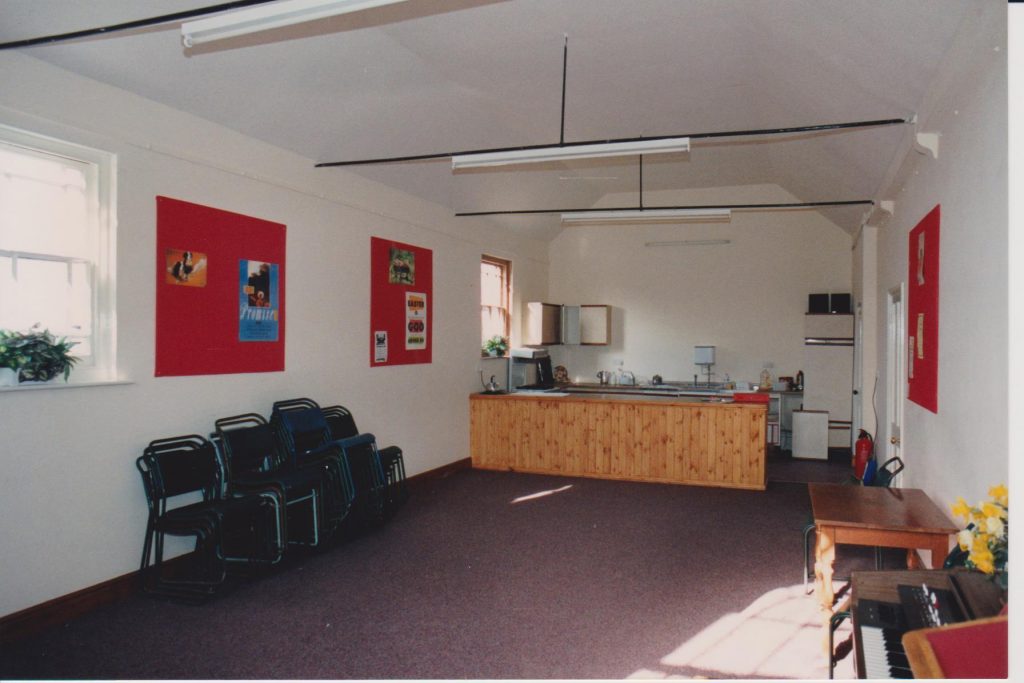
Meanwhile, the chapel work was sill underway:
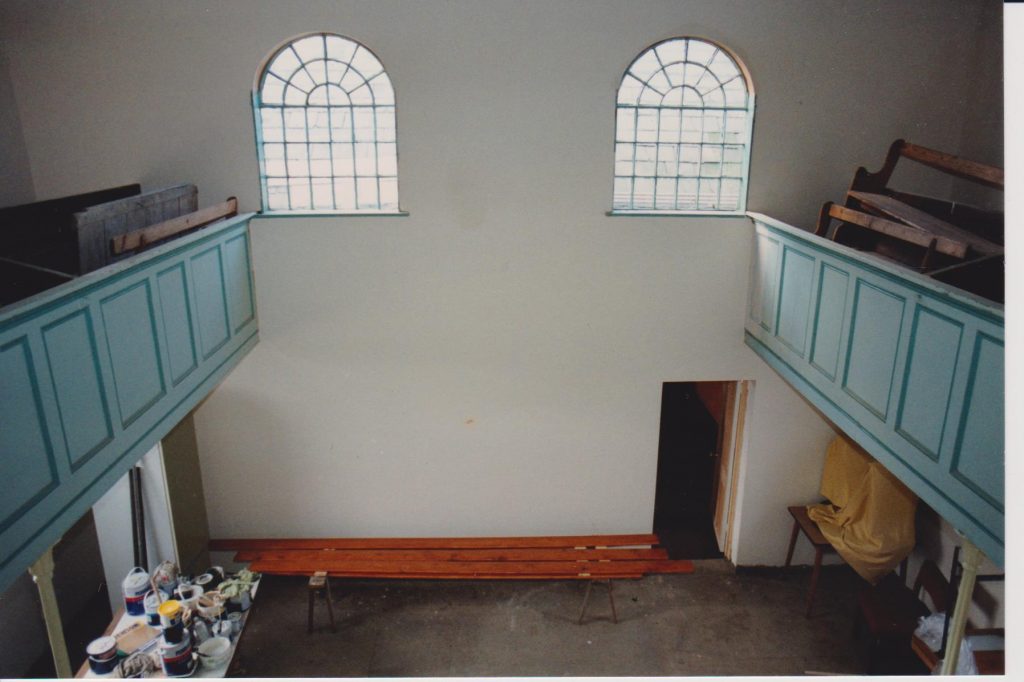
Including the repainting of the scroll
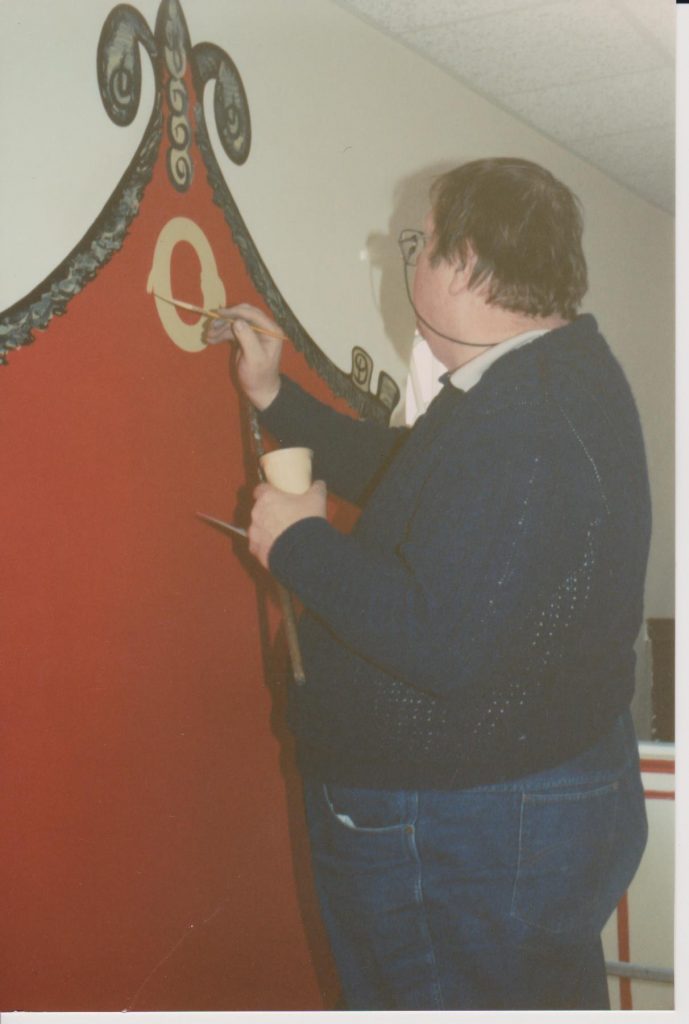
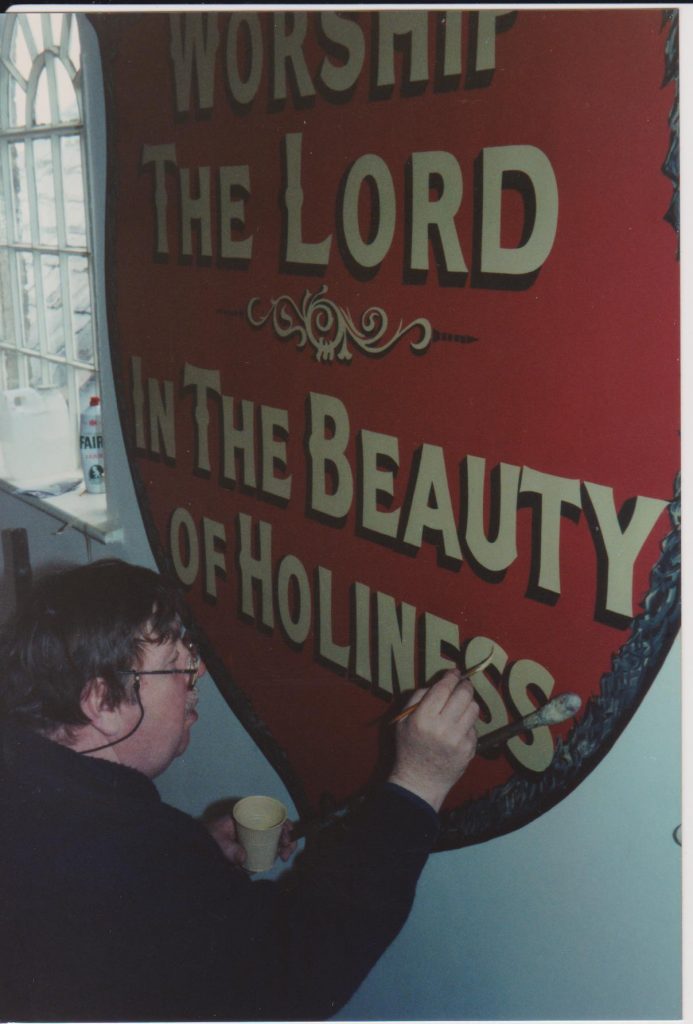
Within 1 year the entire project was completed and the building was rededicated.
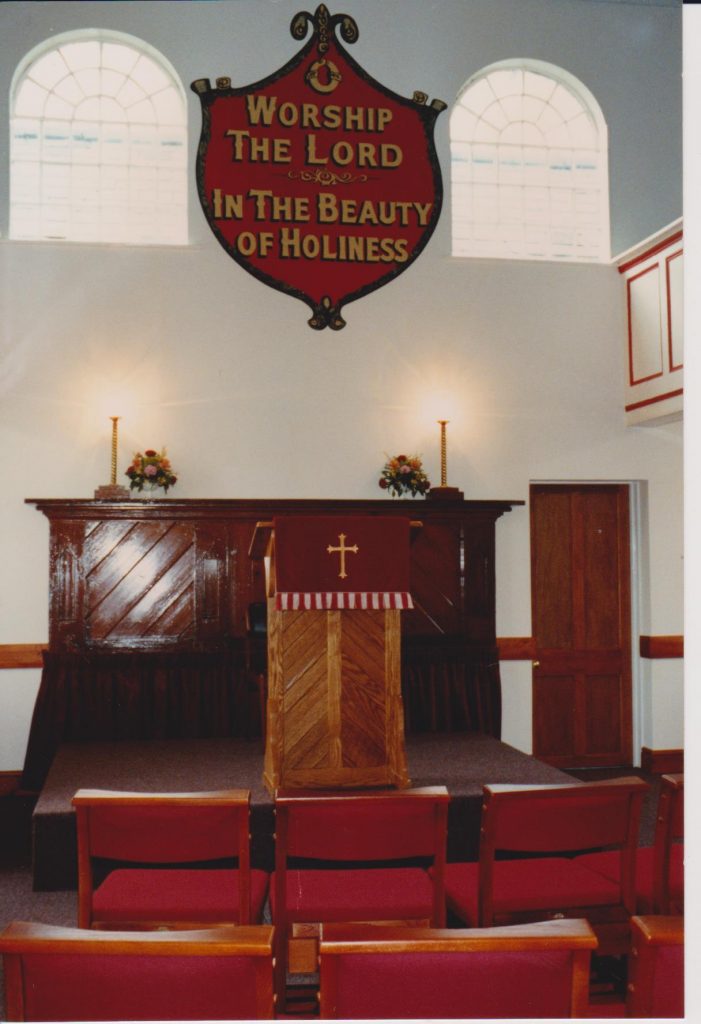
The vast majority of the funds required were raised by Church members, who undertook an intensive fundraising period, so successful, that all bills were paid in full upon completion of the work.
Alongside this, the gentlemen of the Church (and their families & friends) undertook much of the building works themselves.
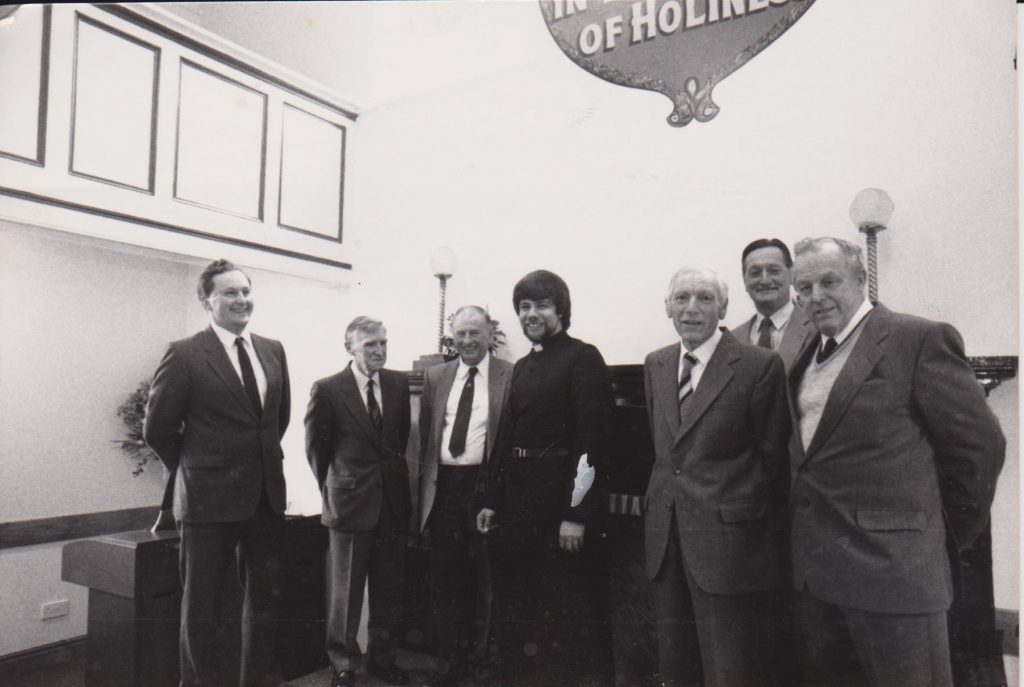
Left to right: Colin Smith, Jim Harris, Cyril Cook, Frank Hodson, Keith Smith, Gerald Smith.
The beautiful premises we enjoy today is a testimonial to the hard work of all those Church members, both Men & Women, who pulled together for a common cause and without whom, it would not have been possible.
Their witness lives on.
